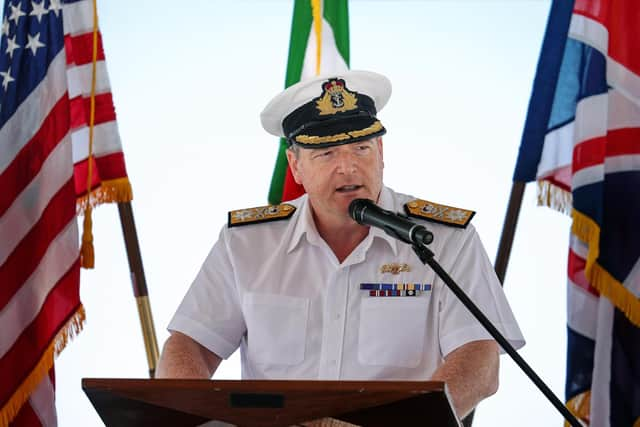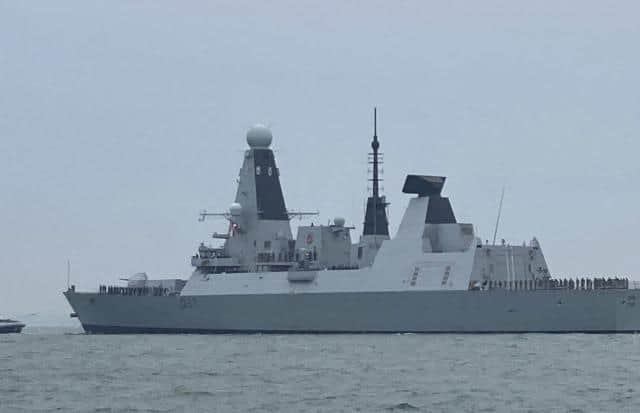HMS Duncan: Portsmouth destroyer takes charge of Mediterranean task group as Nato flagship
and live on Freeview channel 276
HMS Duncan, which departed from the city in June, has now fully taken up the role as flagship of the Standing Maritime Group 2. The force includes five major warships, which patrol waters between Gibraltar and the eastern shore of the Mediterranean.
The Type 45 destroyer has now formally taken charge of the force from the US Navy in the southern Italian naval base of Taranto. A ceremony was held aboard the former flagship Arleigh Burke destroyer USS James E Williams. Command of the force was transferred to Royal Navy officer Commodore Paul Stroude.
Advertisement
Hide AdAdvertisement
Hide Ad

He said: ‘Taking command of this NATO task group is a huge privilege but an enormous responsibility, made more so since Russia’s illegal and brutal invasion of Ukraine last year. When coupled with an ever-present terrorist threat, we are facing some of the gravest security challenges since World War 2, and global peace and stability cannot be taken for granted.
‘However, nothing illustrates the strength, resolve and capability of the NATO alliance more than task groups such as this. Under my command this group of first class ships will work tirelessly to deliver reassurance and security to our regional allies and partners, while maintaining the capability to deter our adversaries. If necessary, we are ready to defend NATO territorial integrity.’
The ships which are part of the group alongside HMS Duncan include frigates Languedoc (France), Fredericton (Canada), Carabiniere (Italy) and the Spanish support ship Patino. They are tasked with covering an area of nearly one million square miles of water: conducting specific exercises and operations, working with allied and partner nations across the region, representing and promoting the alliance during port visits and responding rapidly to major events if required.
SEE ALSO: HMS Collingwood open day – in pictures


A 24-strong staff, three quarters of it Royal Navy, supported by NATO comrades from Greece, Turkey, Romania, Bulgaria and Spain, will direct the group’s activities, under the command of Cdre Stroude. Nato’s Maritime Commander Vice Admiral Mike Utley RN said collective strength guarantees peace.
Advertisement
Hide AdAdvertisement
Hide Ad‘Whilst this may mark a change in the leadership, it is also a sign of continuity – a continuity underpinned by the three decades this Task Group has patrolled these waters, as we celebrate the passing of leadership from one Nato ally to another,’ he said.